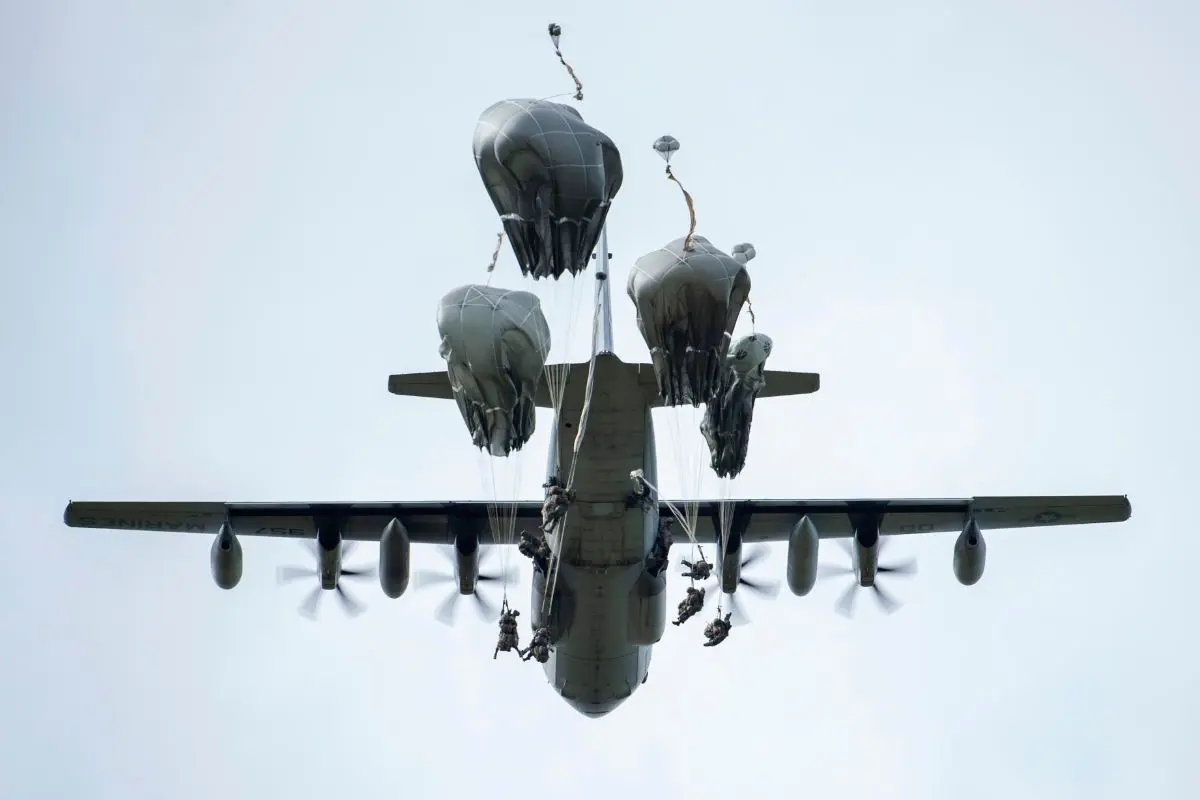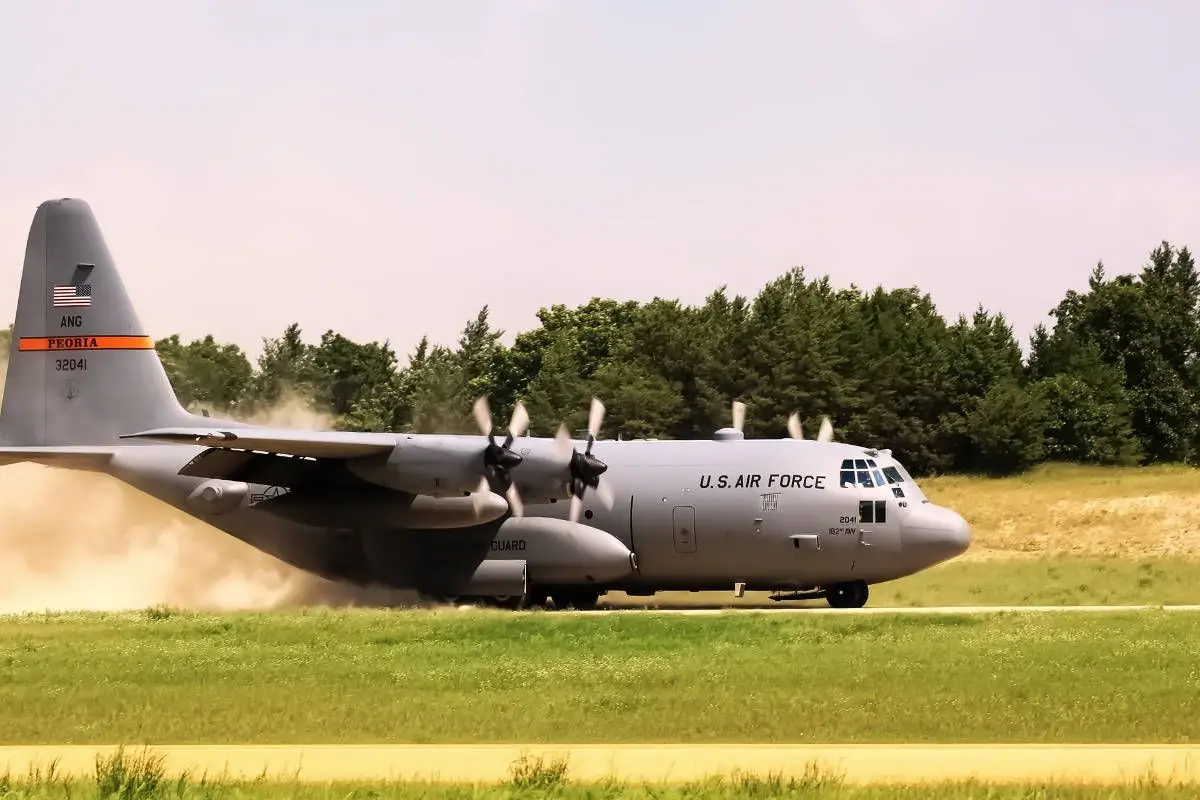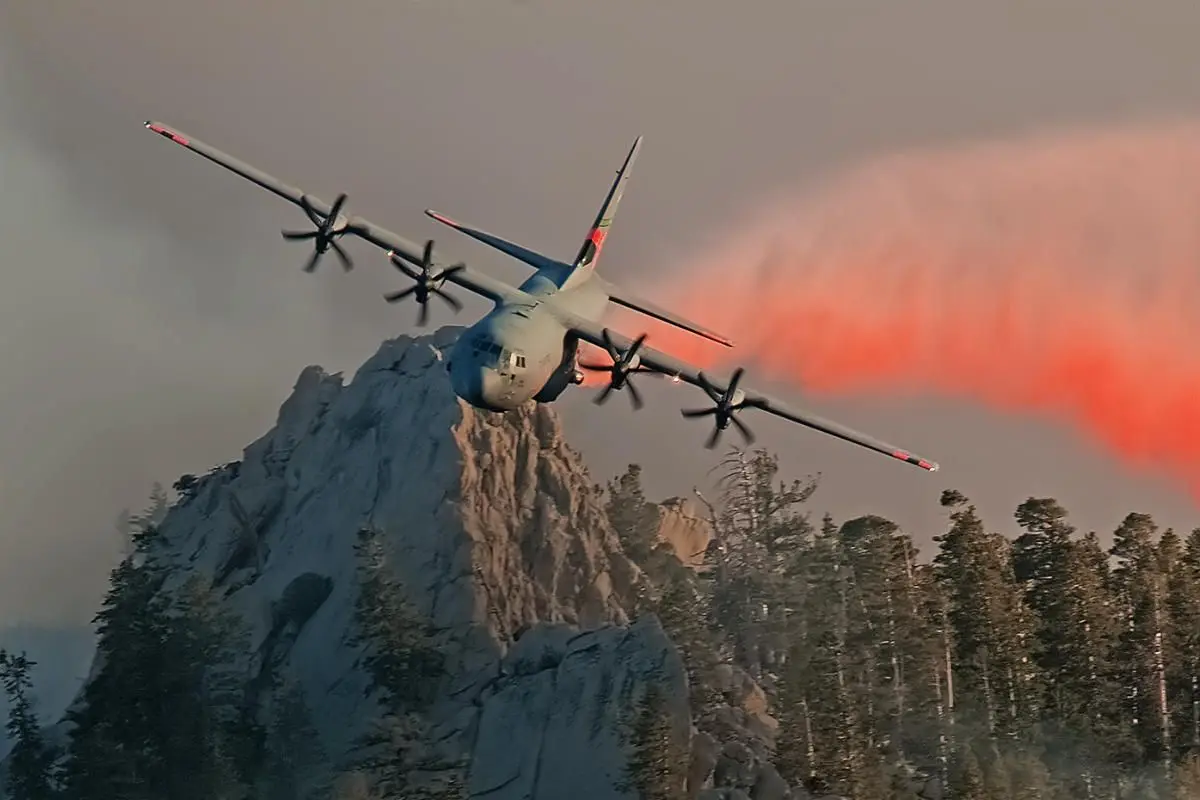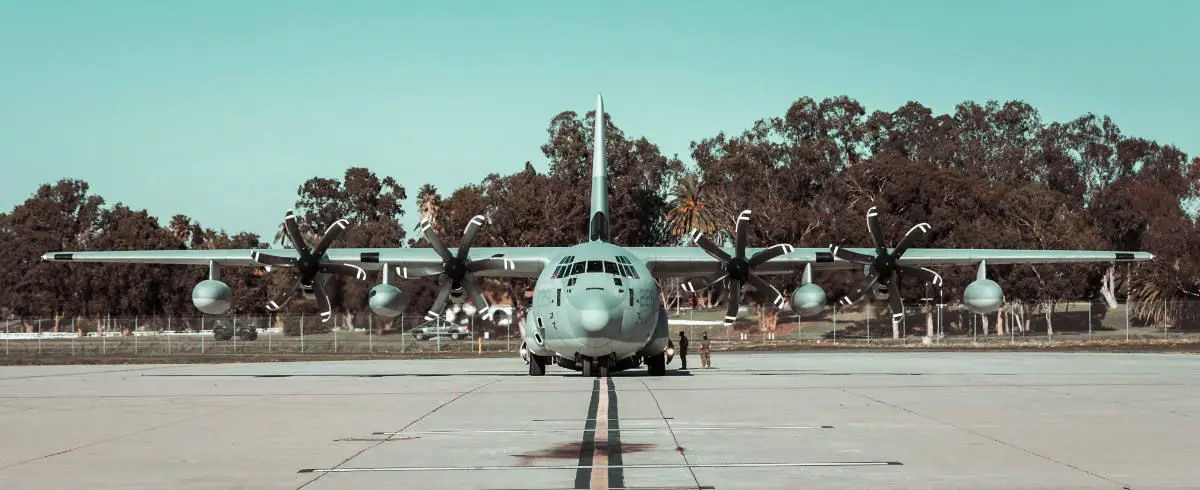
What Is the Lockheed C-130 Hercules Top Speed?
It's not the fastest of aircraft, but the C-130 Hercules is still very competent.
Table of Contents
You have probably heard of the C-130 aircraft before. But perhaps you recognize it more with its more common name:
The Hercules.
It is officially named the Lockheed Martin C-130 Hercules, an American four-engine turboprop military transport aircraft.
One of the unique abilities of the C-130 is its capability to use unprepared and very short runways for both takeoff and landing. In addition, it is a highly versatile aircraft and is thus suitable for many different roles.
More than 60 countries operate the Lockheed C-130 Hercules as their main tactical air transport. It does an excellent job at moving military equipment, and the ability to also perform airdrop missions makes it a true multi-role aircraft.

Introduced in 1956, the C-130 Hercules is one of the longest continuously produced military aircraft. The current version, the C-130J Super Hercules, is the current version in production.
Unlike fighter aircraft, speed is not the highest priority for transport aircraft. The Lockheed C-130 Hercules top speed is therefore not among the highest in the world of aircraft.
However, average cruise speeds are usually lower: The C-130 "original" Hercules usually cruises at 336 mph (541 km/h) while the Super Hercules cruises at around 400 mph (644 km/h).
About the Lockheed C-130 Hercules
Lockheed (and later Lockheed Martin) has produced the C-130 in over 40 different versions, including a civilian freighter variant, since its introduction in 1956.
The newest military variant is the C-130J Super Hercules, which adds significant upgrades to the proven airframe. It features new turboprop engines, six-bladed propellers, digital avionics, and several other new systems. The Super Hercules is becoming the widely used variant globally as it is the only variant currently in production.

Versatile as it is, the C-130 Super Hercules can carry a wide range of cargo and a maximum of 42.000 lb (19.000 kg) in total. For example, passengers, airborne troops, or up to three Humvees.
A vital strength of the C-130 is its ability to use very short and unprepared runways. That means that the aircraft can deliver the cargo to more places - A critical logistical feature in military operations. When landing is not possible, the Hercules can instead airdrop the hardware or troops it carries.
Another critical feature is a large service area, and the C-130J Super Hercules has a range of 2.100 miles (3.300 km) at the usual maximum payload of 34.000 lb (15.400 kg).
What Is the C-130 Hercules Built For?
Lockheed originally developed the aircraft for military transport with cargo loading from a ramp in the rear. They designed it for troop and cargo transport and medevac missions.
However, the versatile airframe has found many other uses as well.
Among them is a gunship variant called the Lockheed AC-130. It is heavily armed and features a wide range of ground attack weapons. The AC-130 flies in large circles around a ground target during an attack, focusing the fire on it for longer than a conventional attack.
Other roles include search and rescue, weather monitoring, scientific research, aerial refueling (Lockheed Martin KC-130), aerial firefighting, and humanitarian aid.

The Lockheed Martin C-130 Hercules has a long and eventful operational history. In the Vietnam War, it supported the United States Air Force strike aircraft and performed reconnaissance duties.
In the Falklands War, both sides used C-130 aircraft. Argentina used them for resupply and refueling missions. They even modified some of them to bombers. While Britain used their C-130s for general logistical operations, they also shot down an Argentine Hercules, using a Sea Harrier.
In non-military applications, the Lockheed Martin C-130 Hercules has been used to clean up the oil from the Deepwater Horizon Oil Spill in 2010. The U.S. Coast Guard C-130s to spray oil dispersants and break up the oil.
After Hurricane Harvey in 2017, FEMA deployed C-130s to conduct mosquito control aerial spray missions over areas with large amounts of standing water. These missions successfully helped contain the increase in mosquitos.
In recent years, the Lockheed C-130 Hercules has flown firefighting missions over Australia during the 2020 bushfires.
Why Is the C-130 Called Hercules?
During the development of the C-130 in 1953, Lockheed management arranged an internal naming competition to name the new aircraft they were currently developing.
Employees were encouraged to submit ideas for a new name. Lockheed would award the winning bid, and prizes included saving bonds, trips, and flights.
During the two-week competition, employees submitted more than 9.000 name ideas. In November 1953, the name "Griffin" won the first prize.
But Lockheed management had other plans. They decided on Hercules, as Lockheed's tradition was to name their aircraft after celestial constellations. In addition, the Hercules name related better to the aircraft's many capabilities and functions. More than 160 employees also submitted the name in the competition.
The name stuck and is still used today and through the many variants of the C-130 over time.
The Swiss Army Knife of the Military
It is a globally adopted aircraft. More than 60 countries operate at least one version of the C-130 Hercules. Introduced in 1956, it is also one of the oldest aircraft still in production. Through all these years, Lockheed and other manufacturers have developed more than 40 different versions of the C-130. Including a civilian variant.

Despite its adaptation to various other roles, Lockheed originally developed the Hercules for transport, which is still its primary use today. The aircraft's ability to operate under primitive conditions and short, unprepared runways has cemented its long and diverse operational history - both in and out of conflict.
Now that you have learned about the Lockheed C-130 Hercules top speed, you might be interested in the F-22 Raptor top speed and how it reaches it.
Planenerd Newsletter
Join the newsletter to receive the latest updates in your inbox.






